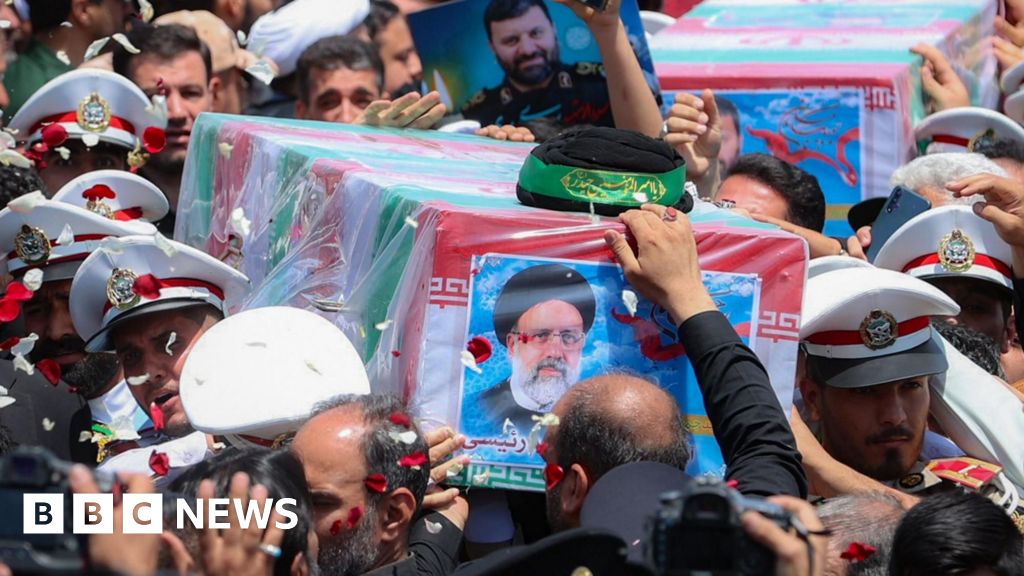Iran’s late President, Ebrahim Raisi, is being buried in his home city of Mashhad, four days after he was killed in a helicopter crash.
The 63-year-old hard-line cleric will be laid to rest in the holy shrine of Imam Reza, a revered figure in Shia Islam.
TV pictures showed large crowds gathered in one of the north-eastern city’s main streets ahead of the ceremony.
Seven other people died in Sunday’s crash during bad weather in Iran’s mountainous north-west.
They include Raisi’s foreign minister, Hossein Amir-Abdollahian, who was buried on Thursday at the Shah Abdolazim shrine in Rey, a southern suburb of the capital Tehran.
Ebrahim Raisi’s burial at the gold-domed Imam Reza Shrine – a memorial to the eighth Shia imam, which is considered the holiest in Iran – comes after days of ceremonies elsewhere.
On Wednesday, leaders and other dignitaries from the country’s allies and neighbours attended a commemorative event in Tehran.
They were welcomed by Raisi’s former First Vice President, Mohammad Mokhber, 68, who will serve as acting president until an election is held on 28 June.
Also present were representatives of the so-called “Axis of Resistance”, a loose network of armed groups which receive Iranian weapons, training and funds.
They included the political leader of the Iran-backed Palestinian armed group Hamas, Ismail Haniyeh, the deputy secretary-general of Lebanon’s Hezbollah movement, Naim Qassem, the spokesman of Yemen’s Houthis, Mohammed Abdulsalam, and the head Iraq’s paramilitary Popular Mobilisation Forces, Faleh al-Fayad.
Iran’s Supreme Leader, Ayatollah Ali Khamenei, also led prayers for those killed.
Raisi was close to the 85-year-old, who is the ultimate authority in the Islamic Republic, and was widely seen as a potential successor.
Senior Western officials were noticeably absent from Wednesday’s ceremony, reflecting their countries’ strained relations with Iran.
Tens of thousands of people have taken part in the funeral processions in recent days, which the government and state media have portrayed as demonstrations of national unity.
However, many more people have stayed home, with some even celebrating the president’s death despite prosecutors warning that they could face prosecution.
Millions despised Raisi for overseeing the deadly crackdown on the “Woman, Life, Freedom” protests that erupted in 2022, a year after he took office.
He also faced calls for an international investigation into his alleged role on the “death committee” which ordered the mass executions of political prisoners in the 1980s.
His time as president will also be remembered for a deepening economic hardship and an unprecedented direct military confrontation with Israel last month, which raised fears of a regional war.
Iranian authorities say they are still investigating what caused the helicopter crash in which he died.
Officials have said the aircraft – a decades-old, US-made Bell 212 – hit a mountainside as it flew to the north-western city of Tabriz in fog and heavy rain.
Raisi was travelling with Amir-Abdollahian, the governor of East Azerbaijan province, Malek Rahmati, and Tabriz’s Friday prayer leader, Ayatollah Mohammad Ali Al-e Hashem, as well as the head of the presidential security team and the helicopter’s three crew following the inauguration of two dams on the border with Azerbaijan.


